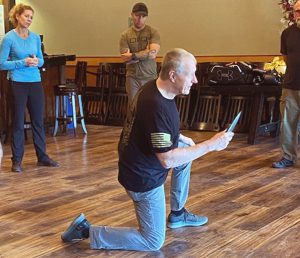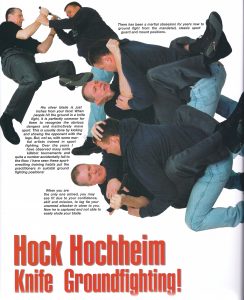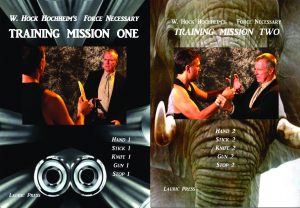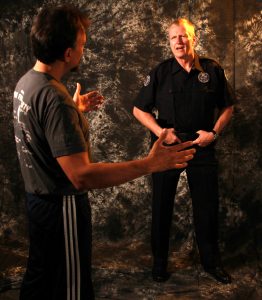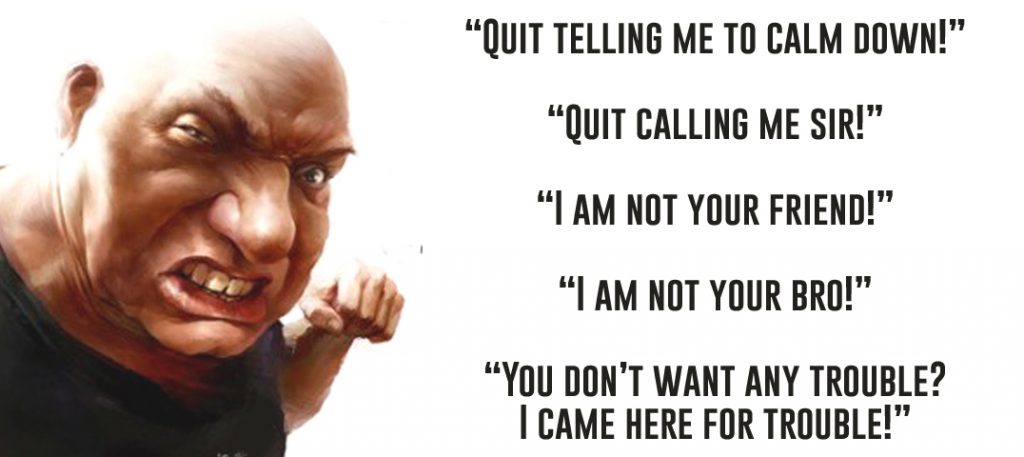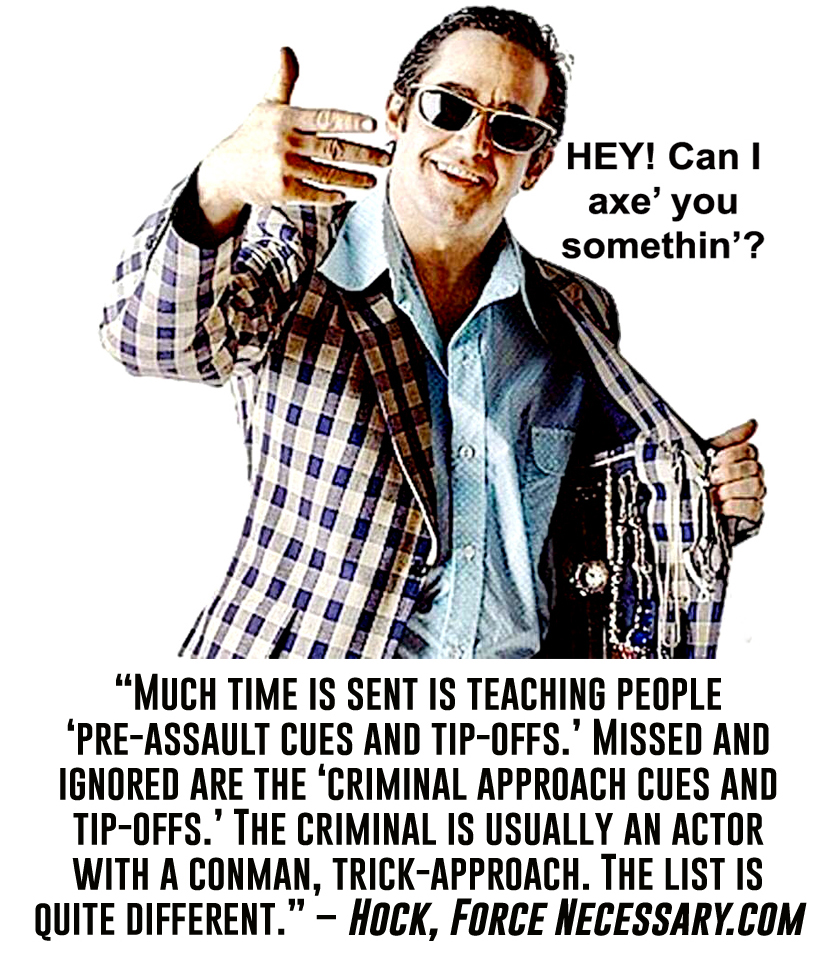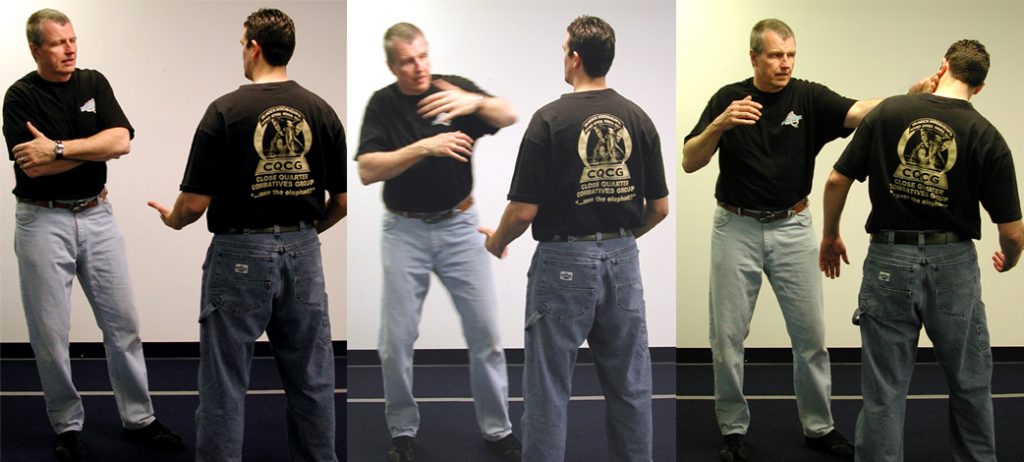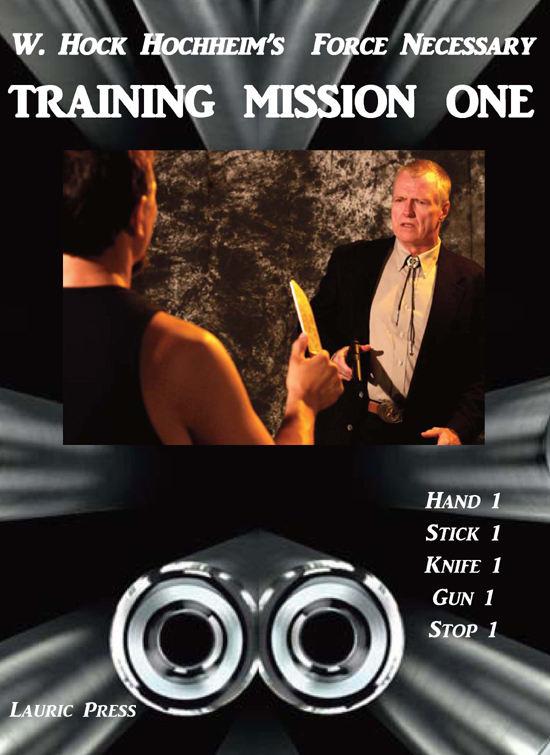In 1986, I became fascinated by the Bruce Lee’s essay on “the stance of no stance,” idea. Whether hand, stick, knife or gun, I opted for the loose “ready stance,” and the “balance and power in motion” concept, a motion-picture-idea rather than a still-photo-idea.
Thanks to Bruce Lee, the Inosanto Family (and Ed Parker) when teaching since the late 1980s, I organized and demonstrated the Ten Probable Position-Problems to prepare people for the full spectrum of mixed weapon fighting possibilities. I was a cop then and we had to fight on the ground periodically, so even before the BJJ madness-fad, many of us trained in a diverse Police Judo, later re-named Police Defensive Tactics (both very incomplete). And, I was deeply involved with the Inosanto Family and they were deeply involved in “shooto” – “shoot wrestling.”
One might say there are three generics in “street fighting-survival” challenges. 1) standing, 2) kneeling-seated, 3) floor-ground. But inside each there are differing heights and needs, making up the ten. For me a system-art that spends too much time in one of the categories is forgetting the importance of the others. In any fight you may well transition through some of these ten. Investigate them through the Ws and H Questions, the who, what, where, when, how and why questions to best explore combatives. One such “Where” question is…”Where are you?” Standing? Kneeling? Seated? Floored-grounded?
- Problem 1a: Unready Standing unprepared – the “stupid bus top.” This is a concept I learned from Ed Parker Kenpo karate in 1973. You are standing normally (like waiting for a bus). You are probably zoned out and unprepared.
- Problem 1b: Ready Standing Ambush – the “prepared bus stop.” You are prepared but don’t look so to an opponent. (Think sucker punch approach, concept.)
- Problem 2: Ready Standing – “Weapon” Forward or as in a right side lead. (Weapon as in hand, stick, knife, gun.)
- Problem 3: Ready Standing – “Weapon” Neutral or as in hands-torso showing no lead. (Weapon as in hand, stick, knife, gun.)
- Problem 4: Ready Standing – “Weapon” Forward or as in a left side lead. (Weapon as in hand, stick, knife, gun.)
- Problem 5: Knee Height (or seated,) versus Standing.
- Problem 6: Knee Height (or seated,) versus Knee-high or Seated.
- Problem 7: Knee Height versus Someone Below You. This is the top-side of a floor-ground fight. (Might be two knees down, right knee up or left knee up.)
- Problem 8: Floored-grounded On Back. This means fighting standing, kneeling and grounded enemies. Full spectrum, head to toe (think north-south-east-west).
- Problem 9: Floored-grounded on Right Side. Usually this means fighting enemies that are knee-high or grounded too. Full spectrum, head to toe (think north-south-east-west).
- Problem 10: Floored-grounded on Left Side. Usually this means fighting enemies that are knee-high or grounded too. Full spectrum, head to toe (think north-south-east-west).
YOU WILL BE FIGHTING “HERE”… In many a fight, certainly an ambush, you might never get a chance to strike up a defined “stance.” Still, this study reminds everyone that fighting includes all these up-and-down height categories and they should not be ignored or forgotten.
EVERYTHING you learn, must be experimented through these 10 position (stance) problems. Every strike, kick, lock, etc…can you do it there? Can it work here? There? Up and down? Yes or no? This is the goal of the seamless survival fighter. You fight where you fight, where you are. A true fighter-survivor, so-called “combatives” person, fights standing, kneeling-seated and on the floor-ground, in and out of buildings, in rural, suburban and urban areas. Dissect, identify and discard sports and artsy cancers. A combatives fighting system is about doctrine-doctrine-doctrine, the training skeleton which recognizes chaos, crime and war and best prepares people to respond.
I ask again, “Where are you?”
________________________
Hock’s email is HockHochheim@ForceNecessary,com
Get these Training Mission, second-edition books in Ebook, oversized paperback and full color, collectable hardcover textbooks. Hundreds of pages of thousands of how-to photos. (there will eventually be about six Training Mission books. Click here
